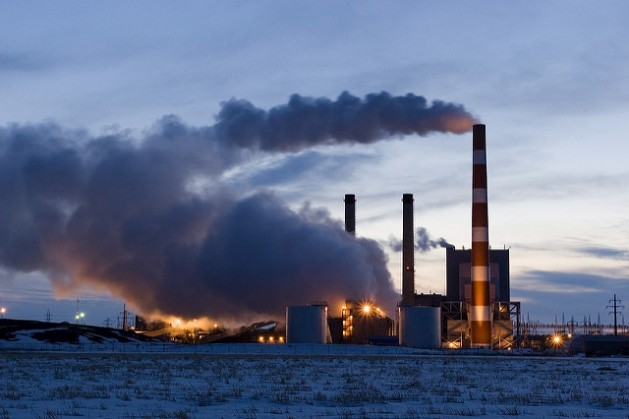The eighth edition of UN Environment’s Emissions Gap report, released ahead of the UN Climate Change Conference in Bonn, finds that national pledges only bring approximately one-third of the reduction in emissions required by 2030 to meet climate targets, with private sector and sub-national action not increasing at a rate that would help close this gap.The Paris Agreement looks to limit global warming to under 2 ˚C, with a more ambitious goal of 1.5 ˚C also on the table. If the emissions gap is not closed by 2030, the report says, it is extremely unlikely that the goal of holding global warming to well below 2 ˚C can still be reached. Even if the current Nationally Determined Contributions (NDCs) are fully implemented, the carbon budget for limiting global warming to below 2 ˚C will be about 80% depleted by 2030. Given currently available carbon budget estimates, the available global carbon budget for 1.5 ˚C will already be well depleted by 2030.
As things stand, even full implementation of current unconditional and conditional Nationally Determined Contributions (NDCs) makes a temperature increase of at least 3 ˚C by 2100 very likely. Should the United States follow through with its stated intention to leave the Paris Agreement in 2020, the outcome could worsen, the report says.
The report lays out an assessment of sectoral mitigation options that can close the gap before 2030 by adopting already known and cost-effective technologies, often by simply adopting or adapting best practice examples already deployed.
The report shows that emissions could be reduced by up to 30 to 40 GtCO2e per annum, with costs below US$100/tCO2e. A large part of this potential comes from six relatively standardized categories: solar and wind energy; efficient appliances; efficient passenger cars; afforestation and stopping deforestation. These six present a combined potential of up to 22 GtCO2e per annum.
The report also covers an assessment of the potential contribution from reductions in short-lived climate pollutants (SLCPs). Reductions of SLCPs limit the rate of short-term warming, and when sustained and combined with CO2 reductions, also help to limit long-term warming.
CO2 emissions have remained stable since 2014, driven in part by renewable energy, notably in China and India, however, the atmospheric concentration continues to increase (earlier post). This has raised hopes that emissions have peaked, as they must by 2020 to remain on a successful climate trajectory. However, the report warns that other greenhouse gases, such as methane, are still rising, and a global economic growth spurt could easily put CO2 emissions back on an upward trajectory.
The report finds that current Paris pledges make 2030 emissions likely to reach 11 to 13.5 gigatonnes of carbon dioxide equivalent (GtCO2e) above the level needed to stay on the least-cost path to meeting the 2 ˚C target. One gigatonne is roughly equivalent to one year of transport emissions in the European Union (including aviation).
The emissions gap in the case of the 1.5 ˚C target is 16 to 19 GtCO2e, higher than previous estimates as new studies have become available.
Non-state action and other initiatives. Actions pledged by non-state and sub-national bodies (such as cities and the private sector) could reduce the 2030 emissions gap by a few GtCO2e, even accounting for overlap with NDCs. The world’s 100 largest emitting publicly traded companies, for example, account for around a quarter of global greenhouse emissions (including emissions from the use of their products by customers).
The Kigali Amendment to the Montreal Protocol aims to phase out the use and production of hydrofluorocarbons. If successfully implemented, it kicks-in too late to impact the 2030 gap but can make a real contribution to reaching the longer-term temperature goals.
Avoiding new coal-fired power plants and accelerated phasing out of existing plants—while ensuring careful handling of issues such as employment, investor interests and grid stability—would help the emissions picture. There are an estimated 6,683 operating coal-fired power plants in the world, with a combined capacity of 1,964 GW. If these plants are operated until the end of their life and not retrofitted with Carbon Capture and Storage, they would emit an accumulated 190 GT of CO2.
In early 2017, an additional 273 GW of coal-fired capacity was under construction and 570 GW in pre-construction. These new plants could lead to additional accumulated emissions of approximately 150 Gt CO2. Ten countries make up approximately 85% of the entire coal pipeline: China, India, Turkey, Indonesia, Vietnam, Japan, Egypt, Bangladesh, Pakistan and the Republic of Korea.
The report also looks at CO2 removal from the atmosphere through afforestation, reforestation, forest management, restoration of degraded lands and soil carbon enhancement as an option for action.
Additionally, a new report released by the 1 Gigaton Coalition on the same day shows that partner-supported renewable energy and energy efficiency projects in developing countries can cut 1.4 GtCO2e by 2020—provided the international community meets its promise to mobilize US$100 billion per year to help developing countries adapt to climate change and reduce their emissions.
(The 1 Gigaton Coalition is supported by UN Environment and the Norwegian Government.)




